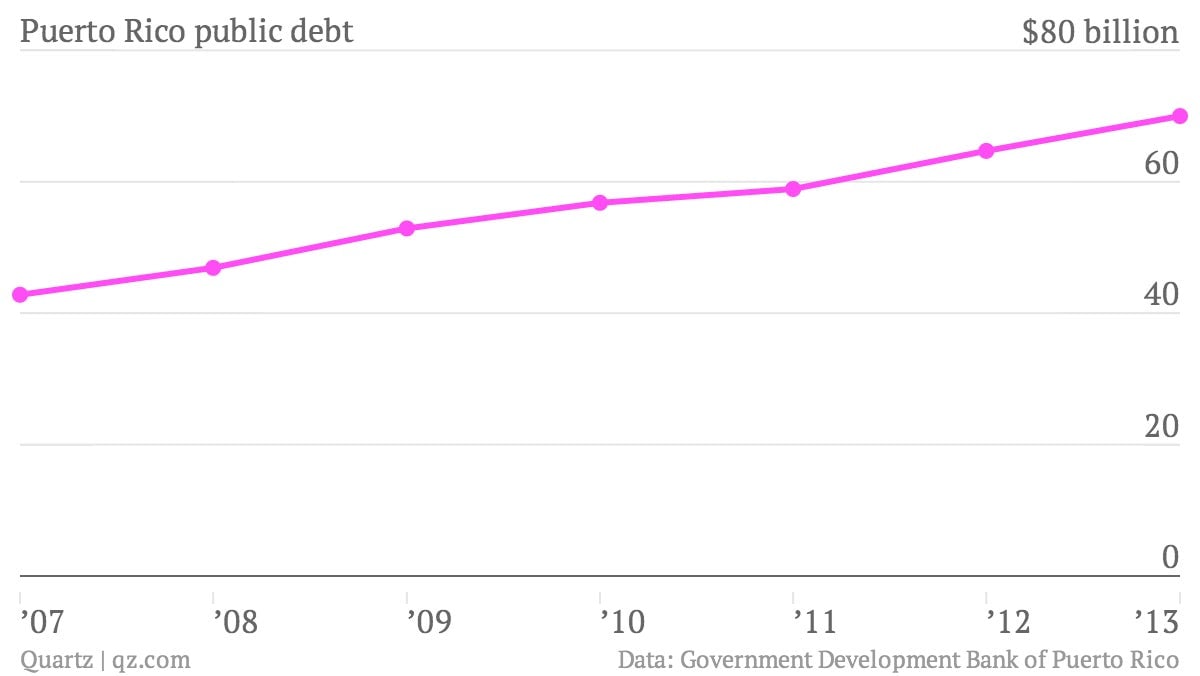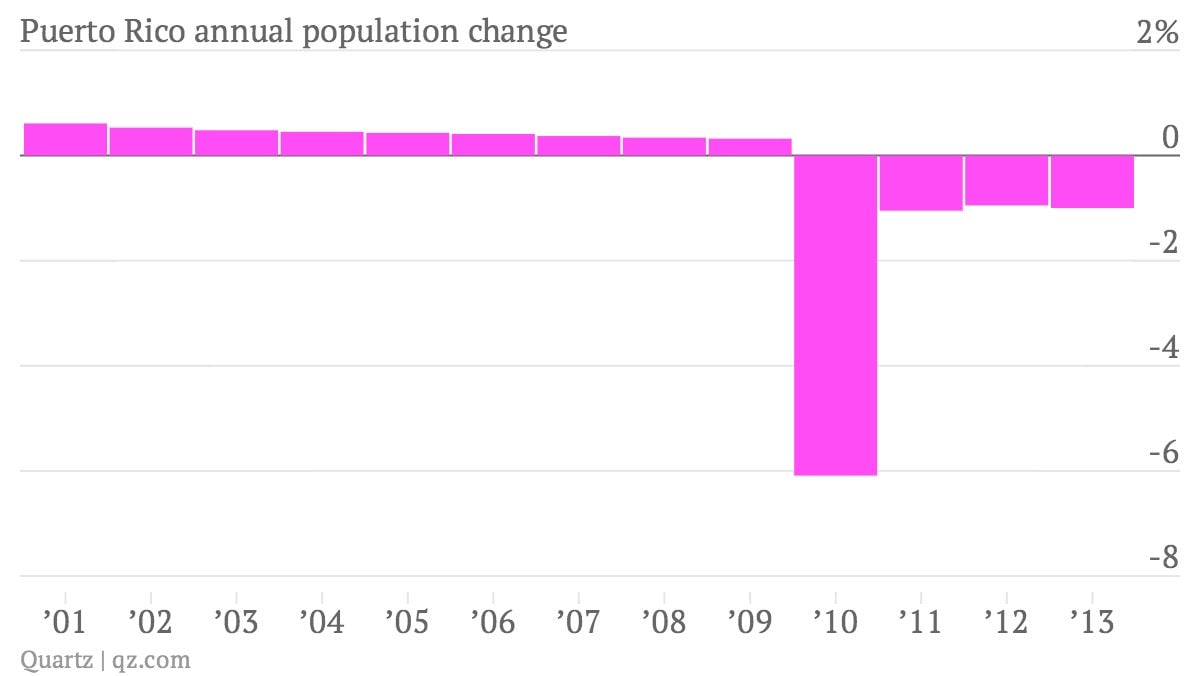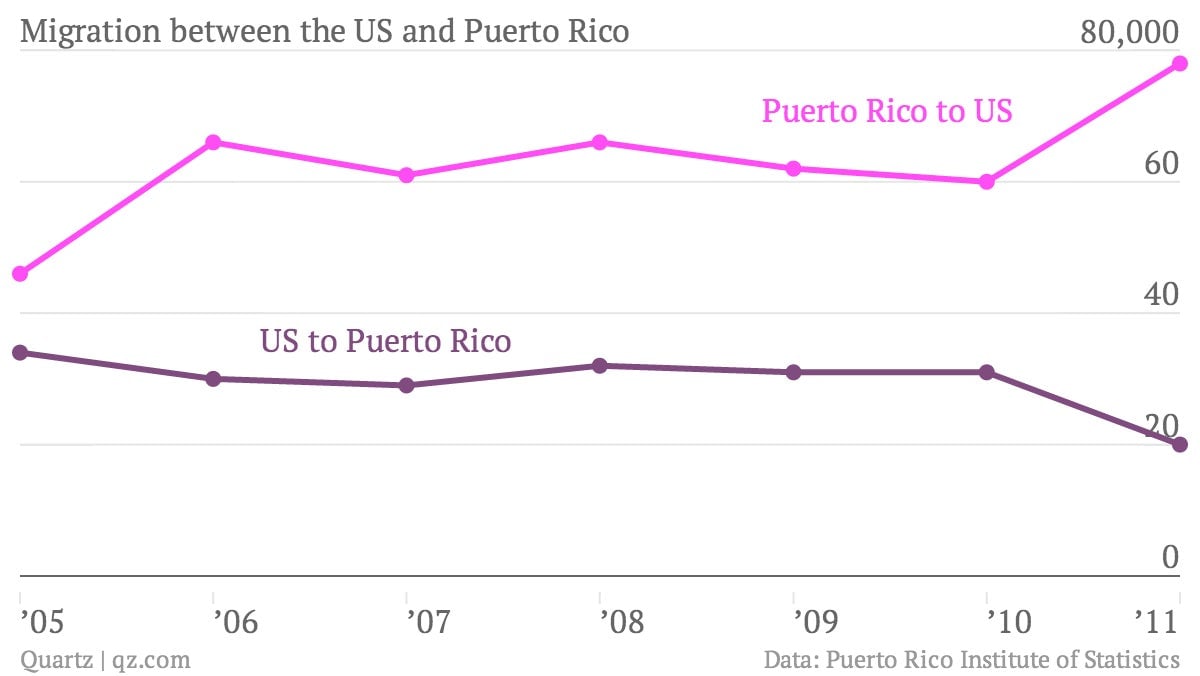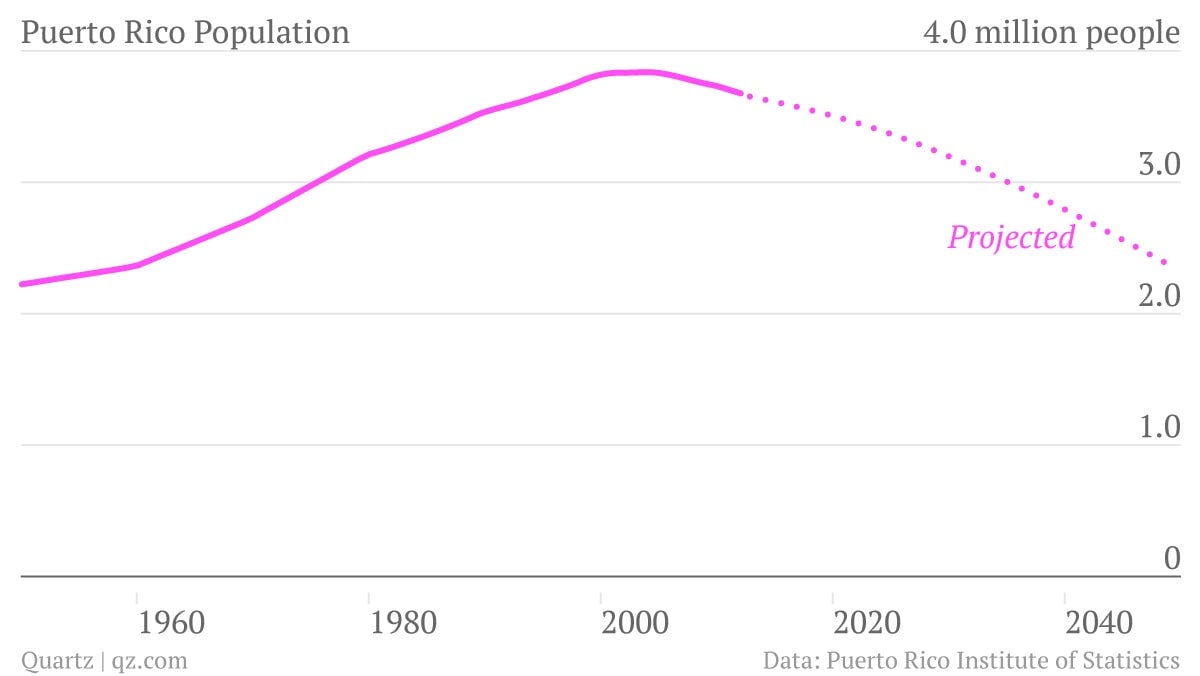The scary thing about Puerto Rico’s population: It’s leaving the island for good
Times are tough in Puerto Rico. The financial crisis has left the island buried in $70 billion in debt, and it’s on the verge of seeing its bonds downgraded to junk.


Times are tough in Puerto Rico. The financial crisis has left the island buried in $70 billion in debt, and it’s on the verge of seeing its bonds downgraded to junk.

It’s people are also leaving the island at a near record rate. The mass exodus seen in the 2000s is the worst since almost half a million people left in the 1950s (paywall). After growing gradually (but at a slowing pace) up to 2009, Puerto Rico’s population has since dropped by nearly 10%, according to US census data. In 2010 alone, the island’s population fell by over 6%, if the data are correct (that was also the year of the last census).

And that seems to be due to locals packing up and shipping off (mostly up north to the US). Migration to the US has long outpaced the number of people making the opposite trip, but in 2011, the most recent year for which data are available, the gap widened sharply.

All this bodes poorly for the island’s future. A shrinking population means a shrinking tax base, which the island’s massive debt and government’s appetite for spending can ill afford. It also means the economy is likely to experience further dips in demand for goods and services, and investment not only from within but from abroad as well.
Worst of all, there doesn’t seem to be any end in sight. If Puerto Rico’s financial troubles persist its people will continue to flee north. Couple that with the island’s quickly declining birthrate, and its population will keep falling. In a report released in 2011, Puerto Rico’s statistics institute estimated that its population would shrink to a mere 2.3 million by 2050 (pdf in Spanish), a 40% decline from 2000.
